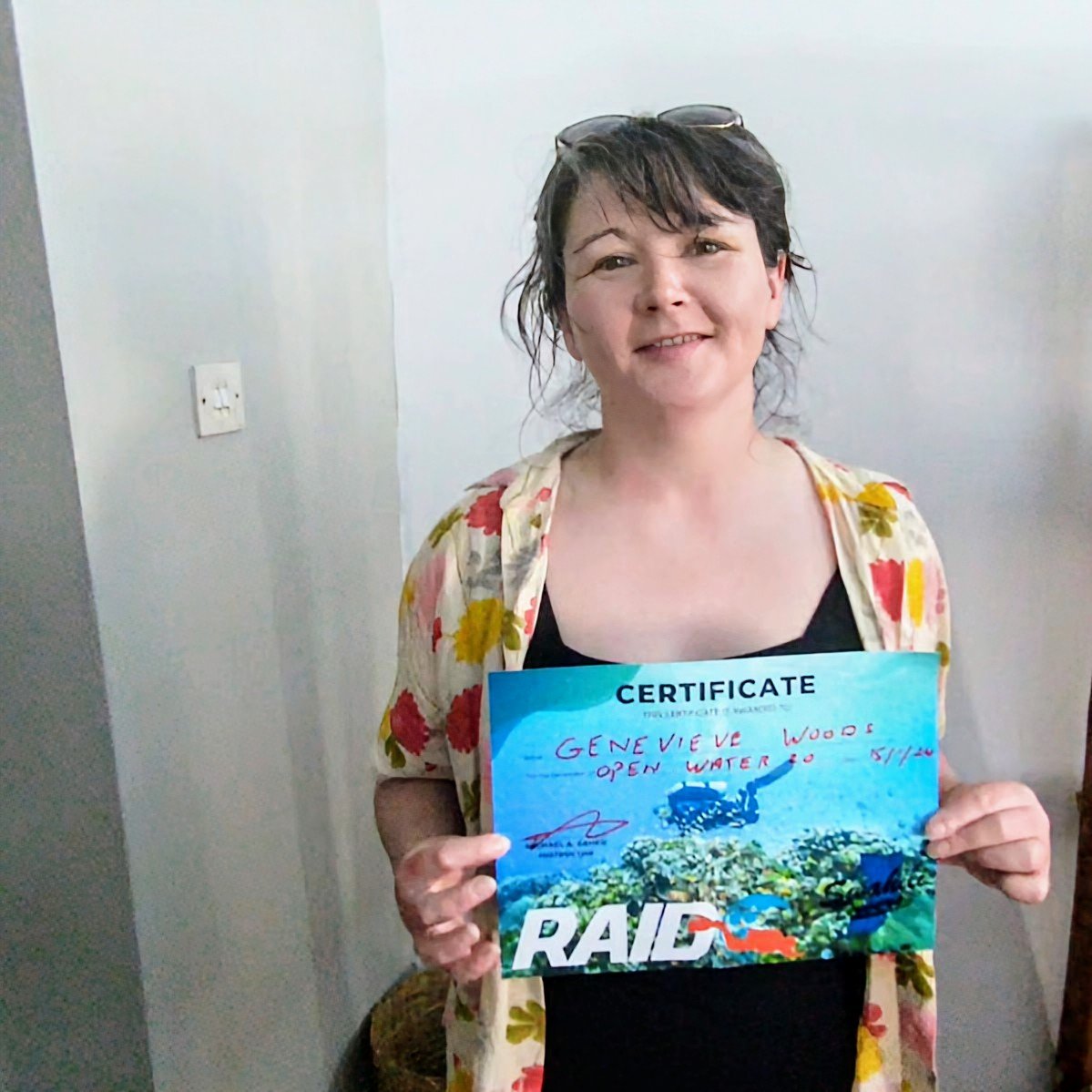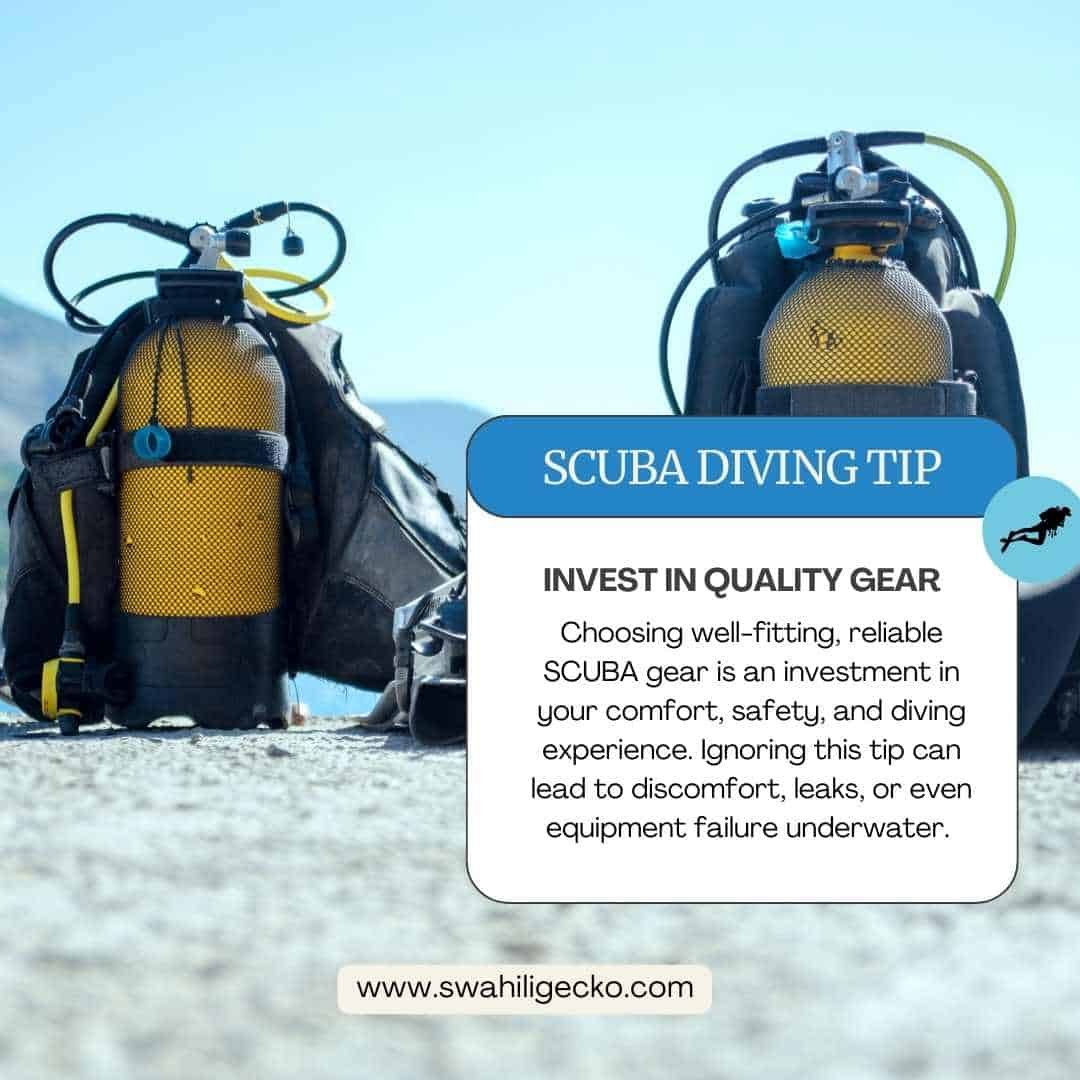How Much Does Scuba Gear Cost? A Complete Breakdown
Thinking about scuba diving? It's amazing, and there are different types of diving to explore, from casual reef dives to adventurous wreck exploration. But, the gear can seem intimidating.
Don't let cost be a barrier – there is a scuba gear setup for every budget. Gear prices vary based on features, brands, and whether you're buying or renting.
Let's break it all down so you can make informed choices when shopping for dive gear.
Essential Scuba Gear Costs and Considerations
These are the dive equipment that you just can’t do without for your dive, and their prices.
1. BCD (Buoyancy Control Device): Think Inflatable Vest
It's like a backpack with an inflatable bladder. Add air to float higher and release air to descend, letting you control your position underwater.
Price Range: $300 - $800+
What Impacts Price:
Brand
Features: Pockets, integrated weight systems, and quick-release buckles all add cost.
Integrated Weights: Some BCDs ditch the old-school weight belt, which can streamline your setup.
2. Regulator: Your Breathing Lifeline
This multi-part system takes high-pressure air from your tank and makes it breathable.
Price Range: $400 - $1500+
What Impacts Price:
Performance: Regulators with balanced airflow are smoother in cold water or at depth.
Environmental Adaptability: Some are sealed against freezing in icy environments.
Brand Reputation: Again, some names are known for reliability.
3. Dive Computer: Your Underwater Safety Buddy
Tracks depth, time underwater, and how much air you have left. It calculates safe ascent rates to avoid decompression sickness (the bends), which is especially important if you're aiming for more advanced scuba dive certifications.
Price Range: $200 - $1200+
What Impacts Price:
Display: Simple LCD vs. color screen
Features: Air integration, compass, nitrox compatibility (for specialized diving).
4. Mask: Your Eyes Underwater
Creates an airspace in front of your eyes so you can see.
Price Range: $50 - $200+
What Impacts Price:
Skirt Material: Silicone is the standard, softer is generally better
Design: Single-lens masks offer a wider field of view
Fit: The most important factor! A good fit means no leaks.
5. Fins: Underwater Propulsion
Think of them like big flippers for powerful kicking.
Price Range: $50 - $300+
What Impacts Price:
Blade Style: Split fins are easier on the legs, paddle fins give more power
Foot Pocket: Full foot (like slip-ons) for warm water, open-heel for booties
Comfort: Avoid blisters with a good, secure fit.
6. Exposure Suit: Warmth & Protection
Insulation! Wetsuits trap water that your body warms up. Drysuits stay completely dry in icy conditions.
Price Range: $100 (shorty wetsuit) - $1500+ (Drysuit)
What Impacts Price:
Suit Type: Wetsuit, drysuit, the thickness needed depends on the water temperature.
Material Thickness: Thicker = warmer, but also bulkier
Temperature Rating: Suits specify the comfort range they're for.
Scuba Gear Cost: Additional Items
These are items you do not need on a dive, but they’re essential for specific use cases, and it is smart to have all these in your box or ensure your dive agency can guarantee these.
Dive Knife: Safety tool for cutting lines, fishing nets, etc. Price Range: $20 - $100+ (higher-end knives have better materials and rust resistance).
Dive Lights: Essential for night dives or exploring dark areas. Price Range: $30 - $300+ (basic lights are cheaper, powerful ones with longer battery life cost more).
Surface Marker Buoy (SMB): Inflatable signal to mark your position at the surface. Price Range: $30 - $80 (Includes SMB and spool/reel for deployment).
Gloves: Warmth and protection from cuts and scrapes. Price Range: $20 - $60 (material and thickness affect price).
Hood: For cold water, keeps your head toasty! Price Range: $30 - $80 (depends on the thickness and if it covers the neck area).
Scuba Tank:
Rental: $10-$20 per dive
Purchase: $200 - $500+ (aluminum vs. steel tanks vary in properties and price).
Most beginner scuba courses and dive shops (especially in dive destinations like Zanzibar) provide tanks as part of the experience.
Weights:
Rental: Often included with tank and other rental gear
Purchase: $20-$100 depending on the material (lead, steel, etc.) and style (weight belt vs. pouches).
Similar to tanks, beginners typically use weights provided by the dive shop. Personalized weights are for later when you fine-tune your needs.
Gear Bag:
Price Range: $50 - $250+
Considerations: Size (bigger is often better!), durability, travel-friendliness (if it's a primary concern).
While incredibly useful, you can manage with a regular bag or duffel in the beginning. Specialized scuba bags become more valuable with frequent travel or if your gear setup grows.
Additional Notes
It's worth mentioning that some dive shops may include tanks and weights in their "essential gear" rental packages too. It's always best for a reader to inquire with a specific dive shop to clarify what's included if they're planning a first dive.
How Does Scuba Gear Work (Together)?
Here’s how scuba gear works…
Think of scuba gear as a synchronized team, working together to let you breathe and move underwater safely (did you know SCUBA stands for Self-Contained Underwater Breathing Apparatus?).
Here's a breakdown of how each piece contributes:
Tank:
Imagine it as a giant air canister. It holds compressed air (usually air, but for deeper dives, it can be a mixture of gases like nitrox) at very high pressure – around 3000 psi!
A valve at the top controls airflow. You won't open this directly – it connects to the regulator.
Regulator:
This is the key to breathing underwater. It acts like a pressure reducer, transforming the tank's high-pressure air into something you can breathe comfortably. It has two main stages:
First Stage: Connects to the tank valve and reduces the pressure to an intermediate level (around 50-100 psi).
Second Stage: This is what you put in your mouth. It further reduces the air pressure to match the ambient pressure around you (which increases as you descend). This lets you inhale naturally without feeling like your lungs are collapsing.
The regulator also has a purge button to expel any water that might have gotten into the mouthpiece.
BCD (Buoyancy Control Device):
Think of this as your underwater life jacket. It's an inflatable vest that helps you control your buoyancy (how well you float).
It has an inflator hose connected to the first stage of your regulator. By pressing the inflator button, you add air to the BCD, making yourself more buoyant and ascending. To descend, you have a purge valve you can press to release air and sink lower.
BCDs also have weights attached (integrated weights are built-in, or you can wear a separate weight belt) to counteract your natural buoyancy and keep you submerged.
Dive Computer:
Essential for your safety underwater. It tracks important dive data like depth, time underwater, and your no-decompression limit (how long you can stay underwater safely without risking decompression sickness). I
t also shows you how much air you have remaining in your tank, usually based on your pressure gauge reading.
Some dive computers have additional features like nitrox compatibility (for using enriched air blends), a digital compass, or even air integration, which connects wirelessly to your regulator for more precise gas calculations.
Mask:
Your window to the underwater world! It creates an air pocket in front of your eyes so you can see clearly. The skirt (the silicone seal that goes around your face) should fit snugly to keep water out.
Fins:
These are your underwater propulsion systems. Powerful kicks with your fins help you move through the water efficiently.
Exposure Suit (Wetsuit/Drysuit):
Keeps you warm and protects your skin from abrasions. Wetsuits trap a thin layer of water next to your skin, which your body heat warms. Drysuits are completely waterproof and require separate insulation layers underneath.
These tools enhance safety and exploration:
Dive Knife: For cutting fishing nets or lines that could snag you.
Dive Lights: See in dark environments or at night.
Surface Marker Buoy (SMB): Inflatable marker to signal your location on the surface.
Gloves: Protection for your hands from scratches and temperature variations.
Hood: Keeps your head warm in cold water.
Renting vs. Buying Scuba Gear
There is a big question about buying or renting scuba gear. If you’re not a regular diver, why spend thousands of dollars to buy complete dive gear when you can rent gear for a few dollars for every dive?
Many dive centers allow divers to rent gear on dive day. But if you’re going to be a professional diver who makes a living doing this, you’ll need to invest in your needs.
Renting Pros:
Try it out: See if you like diving before investing heavily.
Easy on maintenance: No need to worry about dive gear upkeep.
Travel-friendly: No lugging gear around on vacation.
Renting Cons:
Long-term cost: Rentals add up over many dives.
Fit: Might not get the perfect fit with rental gear.
Buying Pros:
Own your setup: Choose exactly what you want for a custom fit.
Cost-effective: Cheaper in the long run if you dive frequently.
Pride: It's exciting to own your underwater adventure gear!
Buying Cons:
Upfront cost: A bigger initial investment.
Maintenance: You're responsible for cleaning, storage, and getting things serviced.
How much does it cost to rent scuba gear?
This varies between dive shops, but you can expect a full set of gear (everything we've talked about) to run around $50-$100 per day. Individual items will be cheaper to rent if you already own some things.
Where to Buy Scuba Gear
Dive Shops:
Pros: In-person advice, try on gear to get a perfect fit, build a relationship for future service and advice.
Cons: Prices can be slightly higher than online.
Online Retailers:
Pros Sometimes lower prices, a huge selection to compare.
Cons: No expert in-person help, returns can be a hassle if things don't fit.
Tips for Saving Money on Scuba Gear
Buy Used: If you're confident, check online marketplaces. Be cautious, and have gear inspected by a dive shop if in doubt.
Lesser-Known Brands: Less hyped brands can be just as good quality at lower prices
Package Deals: Look for beginner bundles with gear sets.
Sales: Take advantage of seasonal sales, especially off-season.
The True Cost of Scuba Diving
Gear is just the beginning! Consider these costs too:
Scuba Dive Courses: Necessary for safe scuba certification.
Travel: Epic dive spots often mean flights and accommodation.
Dive Shop Fees: Refilling your tank, and organizing boat dives, they all add up.
Dive certification: These can cost anywhere from $300 to $1000 depending on the dive locations and training facilities. Learn more about the costs of scuba certification here.
Scuba gear for kids
In addition to the essential scuba gear listed above, there are a number of other items that can be beneficial for kids, including:
Dive booties: These protect the feet from blisters and chafing. They can be purchased for $20-$40.
Dive gloves: These protect the hands from the cold and from cuts and scrapes. They can be purchased for $20-$40.
Dive mask defogger: This helps to keep the mask from fogging up, which can impair visibility. It can be purchased for $10-$20.
Dive light: This is useful for exploring underwater caves and crevices. It can be purchased for $50-$100.
Dive knife: This can be used to cut through ropes or fishing line that may become entangled around the diver. It can be purchased for $20-$40.
Dive flag: This is used to signal to boaters that a diver is in the water. It can be purchased for $20-$40.
Dive logbook: This is used to record dives and track progress. It can be purchased for $10-$20.
The total cost of all of the essential and recommended scuba gear for kids can range from $1,200 to $2,000. However, it is important to note that this is just a starting point. The cost of scuba gear can vary depending on the brand, features, and quality of the equipment. It is also important to factor in the cost of training and certification.
Traveling with Scuba gear
Traveling with scuba gear can be a pain in the ass, but with some planning and prep, things should go well. Before you hit the road, it's here are a few things to keep in mind:
Size Considerations
Scuba gear can be bulky and take up a lot of space. It's important to choose a travel bag that is the right size for your gear. A good rule of thumb is to choose a bag that is slightly larger than your gear, so that you have room to pack other items, such as clothing and toiletries.
How much does scuba gear weigh?
As a general rule of thumb, a full set of scuba gear, including the tank, regulator, buoyancy compensator device (BCD), and other accessories, weighs around 40-50 pounds (18-23 kilograms) out of the water.
Once submerged, the buoyancy of the water reduces the effective weight of the gear, making it easier to move around underwater.
Here's a more detailed breakdown of the weight of individual pieces of scuba gear:
Tank: The tank is the heaviest component of scuba gear, weighing around 30-40 pounds (14-18 kilograms) when full. The weight of the tank varies depending on its size and material.
Regulator: The regulator weighs around 2-3 pounds (1-1.5 kilograms).
BCD: The BCD weighs around 5-10 pounds (2-5 kilograms).
Other accessories: Other accessories, such as the mask, fins, snorkel, and dive computer, typically weigh around 5-10 pounds (2-5 kilograms) combined.
Note that the weight of scuba gear can feel different depending on your body type and strength. For example, a smaller diver may find the gear to be more cumbersome than a larger diver. Figure out how to properly distribute the weight of the gear to avoid any discomfort or fatigue.
Tips for Traveling Scuba Gear
Pack your gear carefully. Make sure that your gear is packed securely and that it is not damaged in transit.
Use a sturdy travel bag. A good travel bag will protect your gear from damage and make it easy to transport.
Check your airline's baggage policy. Some airlines have restrictions on the size and weight of baggage, so it's important to check before you fly.
Pack light. If you're traveling for a long period of time, it's important to pack light so that you don't have to pay extra for overweight baggage.
Consider shipping your gear. If you're traveling to a remote destination, it may be easier to ship your gear ahead of time.
FAQ
How deep can a human dive with scuba gear ?
However, recreational scuba divers are typically limited to a maximum depth of 130 feet (40 meters) for safety reasons. Technical divers, who have specialized training and equipment, can dive much deeper, reaching depths of up to 1,000 feet (300 meters) or more.
The depth a human can dive with scuba gear depends on several factors, including the diver's experience, fitness level, and the type of scuba gear used.
How far can you dive with scuba gear?
Distance is less important than time. Air supply and safe ascent rates are the limits, not how far you can swim.
Who invented scuba gear?
Jacques Cousteau and Émile Gagnan in the 1940s. They created the first "Aqua-Lung", revolutionizing underwater exploration. Today, people dive to enjoy breathtaking coral reef systems and marine life.
Conclusion
Scuba gear costs vary, but there's a setup for everyone. It's a fantastic investment, not only in gear but in amazing underwater experiences. Do your research, budget accordingly, and get ready to take the plunge!

"We were four friends, who went to Swahili Divers for diving. We had 5 days of great diving with the most fantastic instructors. They have a great setup, many spectacular and quite different dive sites, and a very big hospitality. The diving instructors (Alla and Glenn) are very experienced, kind, educated, and funny. You are in absolute safe hands in their company." "
Frederik L, Copenhage(Denmark)

"I came to Pemba to see the coral. It was beautiful, in good condition, and full of fish and nudibranchs. The diving staff of Swahili divers are all excellent. Equipment was all included and was spot-on. My partner completed her Open Water certification in a few days and we were both totally satisfied."
Evo S.





